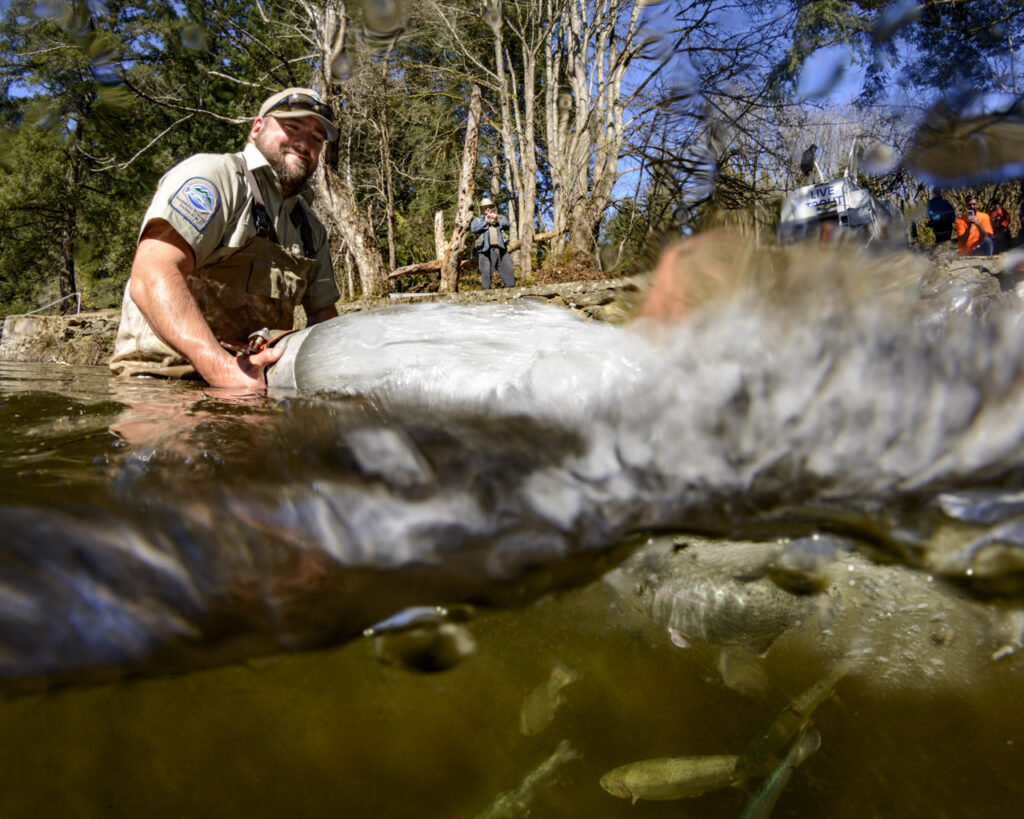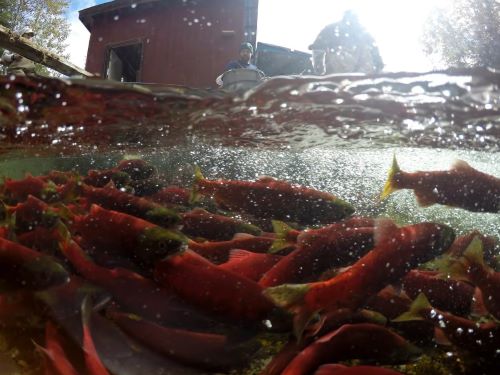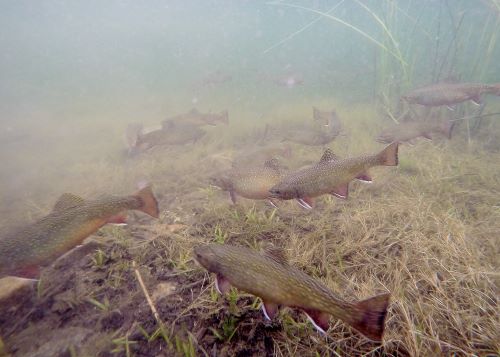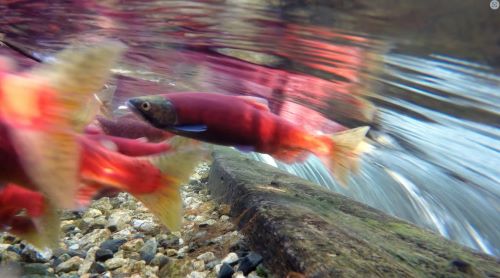During the fall, hatchery staff are busy delivering the fall stocking program, collecting eggs from various sites around the province, and planning for releases in the spring of the following year.
Raising and Releasing Fish
As the Society releases fish at different life stages during both spring and fall, the rearing of kokanee, char, and trout is a year ’round process. This means that at any one time, there can be fingerlings, fry, or larger catchable-sized fish being reared in the ponds, raceways, and tanks at our hatcheries.
Fingerling and fry are released into lakes around the province between October and November each year. Some of the fish at the Clearwater, Summerland and Vancouver Island hatcheries are flown to lakes via helicopter, but most are transferred via stocking truck or 4×4 vehicle.
Catchable-sized rainbow trout are also released in the fall. These fish weigh an average of 230 grams, and are ready for anglers to catch right away. “Catchables” are released several times a year into lakes that are close to urban centres on Vancouver Island and in the Lower Mainland and Thompson-Nicola regions.


The Fraser Valley Trout Hatchery also assists the Province’s coastal rivers recreational stocking program by rearing young anadromous steelhead. During the fall, these fish are transferred to offsite facilities, such as the Chehalis River Hatchery, Inch Creek Hatchery, Little Campbell River Fish Hatchery, and Allco Fish Hatchery, for further rearing before being released into the rivers of the Lower Mainland.
Egg Collection
While some Society staff are busy stocking lakes, others work tirelessly at egg-collection stations. The Aylmer Lake eastern brook char egg-collection station operates annually in early October. The broodstock from this site are used to spawn and fertilize the eggs for brook trout that are raised and released by Clearwater, Summerland, and Kootenay hatcheries.
Since 2015, the Society has collected kokanee eggs to assist with the efforts to restore kokanee numbers in Kootenay Lake. In November, the collected eggs are fertilized and planted in Meadow Creek, the major kokanee-spawning tributary of Kootenay Lake.
Kokanee eggs are also collected for the Society’s recreational stocking program. Kootenay and Clearwater hatcheries currently raise and release sterile kokanee into more than 25 lakes in B.C., with more kokanee fisheries planned for the future.
Kokanee egg-collection stations operate in the fall at various locations depending on the year, including Hill Creek, Whatshan Lake, Columbia River at Fairmont, Norbury Creek (a tributary of the Bull River system), larger stocked lakes in the Interior (Deka, Sulphurous, and Bridge), and the Osilinka River (a tributary of the Williston system).


Broodstock and Spawning
Fall is also a time when Society staff begin planning for future spring releases. The captive Fraser Valley-strain rainbow trout broodstock at the Vancouver Island hatchery are spawned each fall. After the spawn, the eggs are incubated, and then a portion are shipped to the other Society hatcheries for rearing and release. These will eventually be used for the Society’s spring and fall catchable stocking program. You can use the stocking report tool to find out what fish we released, where, and when.
This article is part of a series where we explore the activities that take place at our six hatcheries each season of the year. Read our winter, spring and summer hatchery blogs to learn more.
Author: Staff, Freshwater Fisheries Society of BC
Original Publication Date: January 1, 2020. Updated: September, 2024
